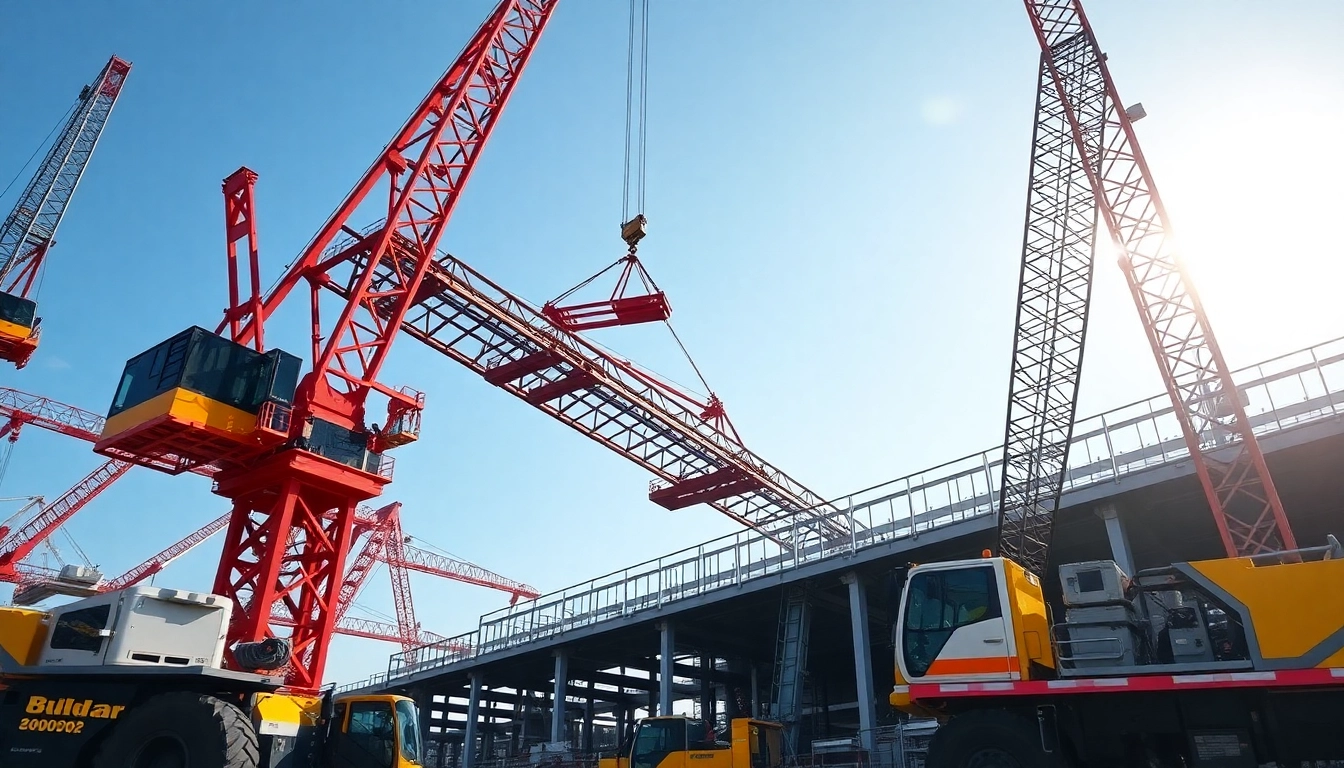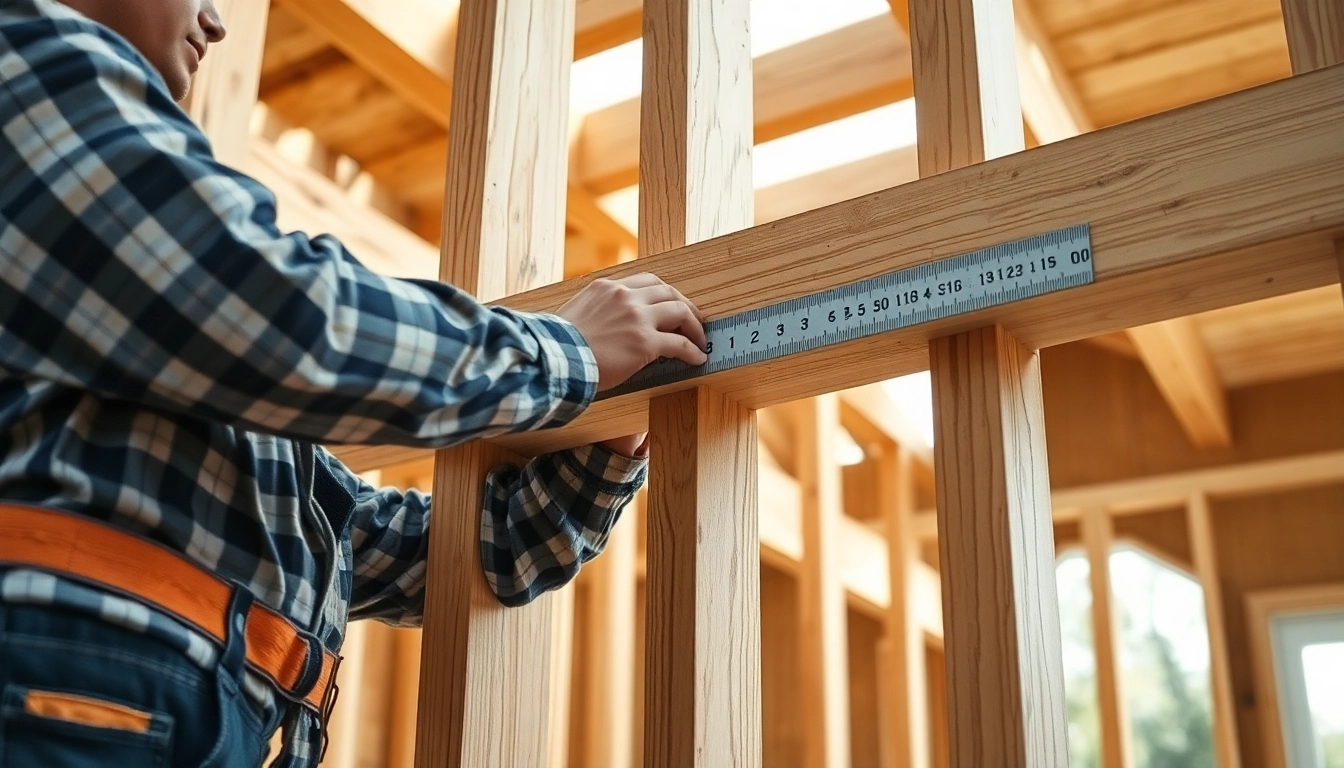Understanding Crane Rental: Types and Applications
Crane rental services are an essential component of the construction, industrial, and infrastructure sectors across the UK. Whether you’re undertaking a small-scale renovation or a large infrastructure project, selecting the right crane and rental provider can significantly influence project timelines, safety, and overall costs. As the demand for efficient lifting solutions grows, so does the diversity of crane types and rental options available to meet various project needs. For anyone involved in construction or industrial operations, understanding the fundamental types of cranes, their applications, and how to choose the most suitable equipment is vital. This comprehensive guide aims to walk you through the essentials of crane rental, highlighting key factors that influence choices and optimizing your project outcomes.
For detailed insights into available options and professional support, explore more through Crane rental services tailored for diverse industry requirements.
Types of Cranes Available for Rental
The landscape of crane rental is defined by the variety of crane types, each engineered for specific tasks, site conditions, and load capacities. A clear understanding of these types enables project managers and decision-makers to select equipment that aligns with their operational demands. The most common crane categories include mobile cranes, tower cranes, and specialized lifting equipment, each possessing unique features and advantages.
Mobile Cranes
Mobile cranes are among the most versatile and widely used in construction and industrial projects. They are mounted on truck or crawler bases, providing mobility and quick setup on various terrains. The key subtypes include truck-mounted cranes, all-terrain cranes, and rough terrain cranes.
- Truck-mounted cranes: Designed for quick deployment and movement between sites, suitable for tasks requiring moderate lifting capacity.
- All-terrain cranes: Combines the mobility of truck-mounted units with the stability of crawler cranes, capable of operating on rough terrains and delivering heavy loads.
- Rough terrain cranes: Mounted on sturdy crawler tracks, ideal for uneven or off-road environments, often used in large-scale industrial projects.
Tower Cranes
Tower cranes are fixed or self-erecting cranes primarily used in high-rise construction. They offer exceptional height and lifting capacity, enabling construction workers to move materials to significant elevations. These cranes can be classified as flat-top, luffing jib, and self-erecting tower cranes, each optimized for different construction scenarios.
Crawler Cranes
Equipped with tracks, crawler cranes provide stability and can operate on challenging terrains. They are ideal for heavy lifting tasks on large construction sites, such as bridges, ports, and power plants. Their ability to self-transport over rough surfaces makes them suitable for complex, multi-location projects.
Specialized Cranes
Other types include loader cranes, pick-and-carry cranes, and knuckle boom cranes. These units are used for specific applications such as loading trucks, yard work, or lifting with tight maneuvering space.
Summary of Crane Types and Their Applications
| Crane Type | Main Uses | Advantages | Typical Projects |
|—————-|—————-|—————-|———————|
| Mobile Cranes | Versatile lifting, transport | Mobility, quick setup | Construction sites, industrial maintenance |
| Tower Cranes | High-rise construction | Height, lifting capacity | Skyscrapers, large commercial projects |
| Crawler Cranes | Heavy lifting, uneven terrains | Stability, mobility on rough terrain | Bridges, port construction |
| Specialized Cranes | Niche applications | Precise and compact lifting | Urban repairs, manufacturing sites |
|
Common Industrial and Construction Uses
Crane rental services underpin a broad range of applications across industrial and construction sectors, facilitating efficient material handling, assembly, and heavy load transfers. Their use cases include:
Construction of High-Rise Buildings
Tower cranes are indispensable for vertical expansion projects, lifting steel beams, concrete, and other structural components to great heights. Their ability to operate in tight urban spaces with precision streamlines the building process, reducing timelines and improving safety.
Infrastructure Projects
Large infrastructure initiatives such as bridges, tunnels, and airports rely heavily on mobile and crawler cranes to manage massive loads and erect complex structures efficiently. These cranes are vital for moving oversized components and long materials like girders and pipes.
Industrial Installations & Maintenance
Industries involved in power generation, manufacturing, and refineries utilize various cranes for equipment installation, maintenance, and moving heavy machinery. The versatility of mobile cranes offers flexibility to industrial sites.
Urban Development and Renovation
In urban settings, crane rental facilitates renovation work, site development, and landscaping by enabling precise lifting of materials and equipment in constrained spaces.
Examples of Specific Applications
- Assembling wind turbines in renewable energy projects
- Loading and unloading port containers
- Setting prefabricated components in modular building projects
- Transporting large HVAC units onto rooftops
Choosing the Right Crane for Your Project
Selecting the optimal crane involves assessing multiple factors: project scope, site conditions, load requirements, and budget constraints. Misjudging these parameters can lead to delays, safety risks, and escalated costs.
Assessing Project Size and Requirements
Evaluate the maximum load your crane will need to lift, including future needs, and the height and radius of lifts. For example, a small residential renovation might only require a portable or mini crane, while large industrial projects necessitate heavy-duty crawler or tower cranes.
Evaluating Site Conditions
Analyze terrain, space constraints, and proximity to structures. Urban areas often restrict available space, favoring self-erecting tower cranes or mobile cranes with precise maneuvering capabilities. For uneven terrains, crawler cranes are more suitable.
Rental Duration and Cost Considerations
Decide whether a short-term or long-term rental best suits your schedule. Duration impacts pricing; longer rentals may benefit from negotiated rates, but also consider potential additional costs such as transportation, setup, and dismantling.
Additional Features and Accessories
Depending on your project, you may require cranes with specialized attachments like jibs, winches, or lifting hooks. Confirm the availability of these options from your rental provider.
Case Study: Choosing the Right Crane for a Medium-Sized Urban Development
A mid-rise commercial building project in Birmingham required a crane capable of lifting heavy materials to 20 stories high within a confined urban site. After an assessment, a self-erecting tower crane was selected due to its adaptability, precision, and minimal foundation requirements. This choice optimized safety, reduced setup time, and maintained project momentum, exemplifying thorough planning in crane selection.
Factors Influencing Crane Rental Costs
Understanding cost structures is crucial for accurate budgeting. Factors influencing rental expenses include project scope, crane type, duration, and additional services. A transparent overview of these variables enables better decision-making.
Assessment of Project Size and Scope
Larger projects with extensive lifting requirements naturally incur higher costs, not only due to the volume of work but also because of crane complexity and operational hours. Establishing precise load and height parameters helps in obtaining accurate quotes.
Types of Cranes and Rental Duration
Different crane types have distinct rental prices. For example, smaller mobile cranes may cost approximately £650 per day, while larger tower cranes or all-terrain cranes can be significantly more expensive. Rental duration—daily, weekly, or monthly—also impacts overall costs, with longer-term rentals often attracting discounts.
Additional Fees and Service Charges
Expect charges for delivery, assembly, disassembly, operator services, insurance, and site surveys. Some providers include these in the initial quote, while others add them as separate fees. Request detailed breakdowns to compare options effectively.
Market Rate Insights
According to recent industry data, typical rental costs for a 25-tonne crane hover around £650 per day, with weekly rentals averaging around £3,000. Tower crane hires in major urban areas tend to be more expensive due to logistical complexities. Understanding regional price differences can help in selecting the most cost-effective provider.
Strategies for Cost Optimization
- Plan your project timeline to minimize crane idle time
- Negotiate extended rental discounts
- Combine multiple lifting needs with a single provider for package deals
- Ensure accurate load measurements to avoid over-specification
How to Select a Reliable Crane Rental Provider
Choosing a trustworthy and experienced rental company is fundamental to project success and safety. An informed selection process involves evaluating company credentials, service quality, and compliance with industry standards.
Key Qualities of a Reputable Rental Company
- Extensive and well-maintained fleet of cranes
- Experienced and certified operators
- Transparent pricing and contractual terms
- Strong safety record and compliance with regulations
- Excellent customer service and support
- Ability to provide comprehensive site consultation and planning
Questions to Ask Before Hiring a Crane
- What are your safety protocols and inspection routines?
- Can you provide references or case studies from similar projects?
- What is included in the rental agreement?
- Are operators certified and experienced?
- What are your policies on damages and insurance?
Ensuring Safety and Compliance Standards
A reliable provider strictly adheres to UK safety standards such as LOLER (Lifting Operations and Lifting Equipment Regulations) and PUWER (Provision and Use of Work Equipment Regulations). Verify that equipment is regularly inspected, maintained, and operated by certified personnel. Conduct site risk assessments and ensure proper signaling and communication during lifting operations.
Case Example: Partnering with a Leading Supplier
A construction firm in Birmingham partnered with a provider noted for its rigorous safety standards and comprehensive support. Regular audits, operator certifications, and transparent communication contributed to a smooth project with zero safety incidents, illustrating the importance of provider diligence.
Best Practices for Safe Crane Operation
Safety is paramount in crane operations. Proper training, clear protocols, and diligent maintenance are key to preventing accidents and ensuring regulatory compliance.
Operator Training and Certification
All crane operators must hold valid NPORS (National Plant Operator Registration Scheme) or CPCS (Construction Plant Competence Scheme) certifications. Ongoing training ensures familiarity with machinery updates and safety procedures. Emphasize the importance of continuous professional development and adherence to safety standards.
Site Safety Protocols and Risk Management
Establish clear communication channels, including signaling and radios. Conduct pre-operation risk assessments, ensure appropriate barriers and signage, and monitor adverse weather conditions that may affect crane stability. Regular safety briefings keep all personnel aware of hazards.
Maintenance and Inspection Routines
Routine checks before each operation include inspection of cables, hooks, and mechanical components. Scheduled maintenance per manufacturer recommendations preserves crane integrity and performance. Document all inspections and repairs as part of compliance records.
Practical Tips for Safe Operation
- Never override safety devices or operate beyond capacity
- Secure the load properly and use appropriate lifting accessories
- Maintain clear visibility and secure communication with the crew
- Ensure the ground is stable and suitable for crane operation
Innovation and Trends in Crane Rental Services
The crane industry is continually evolving, integrating new technologies and sustainable practices to improve safety, efficiency, and environmental impact.
Smart Technology for Enhanced Safety
Innovations include IoT-connected cranes equipped with sensors for real-time load monitoring, stability assessments, and predictive maintenance systems. These capabilities reduce downtime and prevent accidents, promoting a safer work environment.
Eco-friendly Crane Equipment Options
As environmental regulations tighten, manufacturers are developing electric and hybrid cranes that significantly reduce emissions. These green alternatives are gaining popularity, especially in urban construction projects aiming for sustainable development.
Future Outlook for Industry Growth and Development
The UK crane rental industry is poised for growth driven by infrastructure investments, smart technology integration, and sustainability initiatives. Automated cranes, remote operation, and advanced safety systems are expected to define the future landscape, enhancing productivity and safety standards.
Practical Implication: Embracing Industry 4.0
Companies investing in digital transformation will benefit from improved operational insights, reduced costs, and stricter compliance with safety regulations. Embracing these trends positions rental providers and clients for continued success and innovation.



